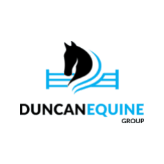In the world of equestrian property development, the journey from a dream to the manifestation of a fully functional horse facility is one fraught with potential pitfalls and learning curves. This blog delves into the quintessential elements of constructing your equestrian paradise, emphasising the pivotal mistake many make: the lack of patience in planning and a failure to adequately learn about their property’s nuances before diving into development.
Imagine investing in a cutting-edge arena, only to discover that seasonal changes transform it into an unintended water feature due to a neighbouring dam’s overflow. Such scenarios underscore the importance of understanding your land’s topography, particularly how water behaves on your property. It’s a lesson in the critical need for adaptable planning and the acceptance that your life on your property is a continuous learning journey.

Here we have compiled the 8 most important questions to ask yourself before fencing your new property:
What type of horses do I want to keep fenced?
The choice of fencing—be it for performance horses requiring the security of a 1.5m four-rail Stallion Rail fence or hobbyists seeking the affordability of shock coat—dictates the initial steps of your estate’s development.
What type of animals do I want to keep out?
(For example, neighbours dogs or wildlife)
Will I need different fences for different horses or disciplines in 10 years?
Where does water lay and how does it move on my property?
This will help you decide where to place gateways and important infrastructure.
What size gateways do I need to accommodate my machinery and vehicles?
It’s essential that your paddocks can be accessed for machinery in case of emergency or maintenance.
How big will the trees in my tree lane grow?
Check that your tiny saplings aren’t going to get too big for their boots and destroy your fences – you would be surprised how many people miss this simple step.
Is my laneway wide enough for me to turn my vehicle around?
6m is wide enough for a quad or buggy and 8m is wide enough for a car to do a 3-point turn.
Am I saving money in the long run by investing in high-quality fencing materials?
Cheap isn’t always cheap in the long run. Investing in high-quality materials saves you work and money in the long run. It also has the bonus of being safer for your horses today.
Effective planning is not a race but a marathon. Adjustments to your initial plan should be anticipated, as you evolve, so too will your needs and desires for your property. Creating a robust plan that grows with you ensures that your investment remains a source of joy rather than a cautionary tale of what might have been.
As you embark on the rewarding journey of creating your horse property, remember that the foundations of a truly successful equestrian estate lie in the ability to plan patiently and learn continually. By prioritising quality, safety, and adaptability, you chart a course towards a property that not only meets the immediate needs of your equine family but also adapts to the unforeseen adventures the future holds.









